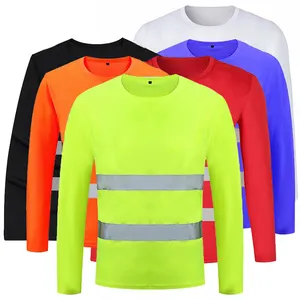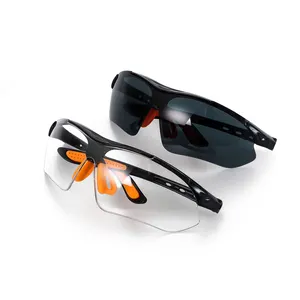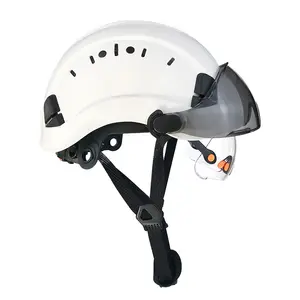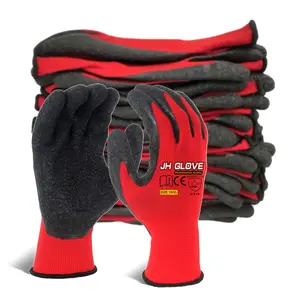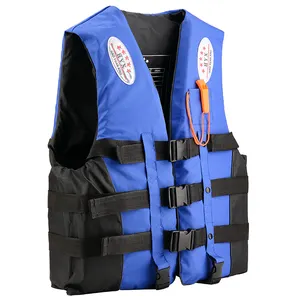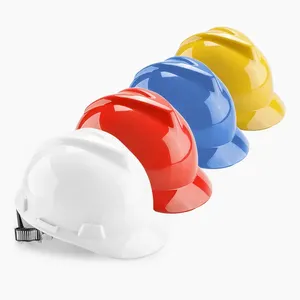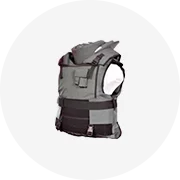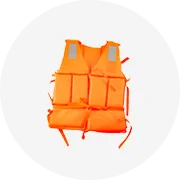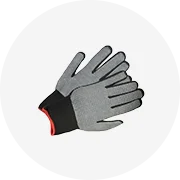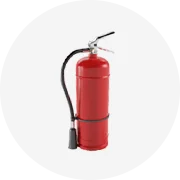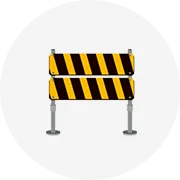Popular in your industry






































































Related Searches:


















































































































































Top categories
About wholesale used fire retardant clothing
In an era where safety is paramount and cost-efficiency is key, the choice of protective workwear is more critical than ever. Fire retardant (FR) apparel stands as a guardian against the perils of flames and thermal exposure, a non-negotiable for industries flirting with fire hazards. Yet, the cost of equipping a workforce with such specialized gear can be daunting. This is where the strategic acquisition of used fire retardant apparel in bulk offers a compelling solution. It promises a blend of high-level protection and fiscal prudence, but it's not without its caveats. This article delves into the multifaceted benefits of opting for pre-owned FR clothing, providing a comprehensive guide to maximizing protection while minimizing costs.
Understanding Fire Retardant Apparel

Flame-resistant clothing, often abbreviated as FR clothing, is designed to protect wearers from intermittent flames and thermal exposure. These garments are engineered to resist ignition and to self-extinguish if ignited, which significantly reduces the risk of burn injuries. The materials used in FR clothing are typically synthetic blends, engineered for their self-extinguishing properties. While not entirely fireproof, FR clothing provides a critical layer of protection by not easily catching fire and by preventing the spread of flames, allowing wearers valuable time to escape from hazardous environments.
The purpose of flame-resistant apparel is to offer protection in industries where there is a risk of fire or thermal hazards. Workers in sectors such as manufacturing or metalworking, where the risk of fire is present, benefit from wearing FR clothing as it can prevent severe injuries in case of an emergency. The Occupational Safety and Health Administration (OSHA) provides guidelines on the use of FR clothing, stipulating that employees exposed to fire hazards must wear appropriate gear that does not increase the risk of injury.
Understanding the difference between primary and secondary protection is crucial when selecting FR clothing. Primary protection is intended for activities with frequent exposure to high levels of heat and potential molten substance splash, similar to a firefighter's gear. Secondary protection is suitable for situations with intermittent hazards, offering safety without the need for constant heavy-duty protection. When choosing FR apparel, it's essential to consider the specific hazards of the work environment to ensure adequate protection.
The Cost-Benefit Analysis of Used vs. New FR Clothing

When considering the purchase of fire retardant (FR) clothing, the decision between used and new is significant. Used FR clothing can be a cost-effective solution, but it's crucial to understand the implications for safety and durability. The primary concern with used FR garments is their history of care and maintenance, which directly impacts their protective qualities. If previous owners have followed proper cleaning and handling procedures, used FR clothing can still offer adequate protection. However, the longevity and effectiveness of these garments may be less than that of new ones, as the flame-resistant properties can degrade over time and with improper treatment.
The choice also hinges on the rigorous testing that FR clothing undergoes to ensure compliance with safety standards such as NFPA 2112. New FR clothing comes with the assurance of meeting these standards, as they have not been subjected to wear and potential mishandling. On the other hand, used FR clothing requires thorough inspection to ensure it still adheres to safety requirements. Buyers should be diligent in understanding the testing methods and standards for flame resistance to make an informed decision.
In summary, while used FR clothing presents an opportunity for savings, it necessitates a careful evaluation of the garment's condition and history. The decision should balance cost savings against the potential risks and ensure that the protective gear still meets the necessary safety standards.
Why Buying in Bulk Makes Sense
Purchasing in bulk offers significant advantages, particularly when it comes to cost savings and environmental impact. Bulk buying reduces the need for individual packaging, which not only cuts down on the use of materials like paper, plastic, and aluminum but also decreases the energy required for production. This approach aligns with eco-friendly practices by minimizing waste that ends up in landfills, as a substantial portion of recyclable packaging fails to be repurposed.
Moreover, bulk purchases typically come with reduced costs since the price of goods often includes the expense associated with packaging and branding. By eliminating these elements, consumers and businesses can enjoy lower prices. The flexibility of buying the exact quantity needed also adds to the cost-effectiveness of bulk buying, preventing over-purchasing and potential waste.
In the context of used fire retardant clothing, buying in bulk not only makes sense from a financial standpoint but also supports sustainability. Reusing and repurposing such specialized apparel contributes to a circular economy, extending the life cycle of products and reducing the environmental footprint associated with manufacturing new garments.
Sourcing from Alibaba.com: A Gateway to Cost Savings
Sourcing used fire retardant clothing through Alibaba.com presents a strategic opportunity for cost savings without compromising safety. The platform offers a diverse range of fire-resistant workwear, from coveralls and work shirts to full firefighter suits, catering to various industrial needs. These garments are designed to meet the rigorous demands of professions exposed to fire hazards, including oil, gas, and electrical work, as well as firefighting and rescue operations.
The availability of bulk purchasing options on Alibaba.com allows businesses to acquire fire retardant apparel at reduced prices. This is particularly beneficial for organizations looking to outfit their workforce with protective gear while managing budget constraints. The used apparel on the platform has been previously worn, yet still maintains the necessary protective qualities, ensuring both safety and affordability.
In addition to the economic advantages, the platform's selection includes apparel that adheres to recognized safety standards, such as the European Standard CE EN469 and NFPA1971, providing assurance of the clothing's performance in hazardous conditions. While prioritizing cost-effectiveness, buyers can also find garments made from durable materials like aramid, known for its flame resistance and strength, which are essential for maintaining safety in high-risk environments.
Types of Fire Retardant Apparel Available on Alibaba.com
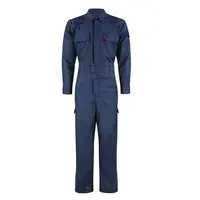
Alibaba.com offers a diverse range of fire retardant apparel designed to meet the safety needs of various industries. The selection includes mechanics coveralls with anti-static and high-visibility features, suitable for environments where visibility and fire protection are paramount. For those facing extreme temperatures, options such as the four-layer anti-radiation jackets provide additional safety. Mining and construction sectors can find reflective fireproof coveralls, ensuring both visibility and protection against flames.
The assortment extends to specialized workwear such as electrician's high-visibility flame retardant workwear, firefighter suits, and arc flash protective clothing. These garments are tailored to offer protection in specific work scenarios, adhering to safety standards. For industrial settings, there are flame retardant construction PPE, flame resistant clothing, and lightweight, breathable coveralls that offer comfort during long work hours.
For those seeking personalized safety solutions, custom safety fire retardant cotton clothing like FR coveralls and workwear are available. High-temperature resistant clothing made from materials like aluminum foil is also on offer for those working in environments with high heat exposure. Moreover, the platform provides flame resistant shirts, pants, and two-piece workwear sets, catering to a variety of professional needs and preferences.
Key Features to Look for in Used Fire Retardant Apparel
When selecting used fire retardant apparel, it's crucial to focus on the key features that ensure safety and durability. Look for garments that resist ignition and self-extinguish once the source of ignition is removed, as this helps prevent burns from both flames and residual heat transfer. Materials such as treated fabrics are desirable for their inherent flame-resistant qualities. Additionally, check for clothing that doesn't break open when heated, as this could expose skin to hazards and increase injury severity.
It's also important to understand the protective capabilities of the apparel. Ensure that the used garments have a clear arc rating, which indicates the level of protection against heat transfer. This rating is crucial as it determines how much protection the clothing provides in the event of an arc flash. While layering can enhance protection, each piece should offer adequate defense on its own.
Lastly, consider the fit of the flame-resistant clothing. Garments should be loose enough to create an insulating layer of air between the fabric and the skin, which can help shield the wearer from heat. However, they should not be so baggy as to catch on equipment or impede movement. Proper fit contributes to the overall effectiveness of the fire retardant apparel in protecting against thermal hazards.
Material Considerations for Fire Retardant Clothing
When considering materials for fire retardant clothing, it's important to understand the distinction between fire-retardant and fire-resistant fabrics. Both are designed for safety in environments with potential exposure to fire or intense heat, but they operate differently. Fire-retardant materials are treated with chemicals that reduce flammability. On the other hand, fire-resistant fabrics are inherently resistant to catching fire and do not melt easily.
Synthetic fibers are prevalent in the production of fire-resistant apparel due to their higher melting points and lower thermal conductivity compared to natural fibers. These synthetic materials are less likely to ignite and will typically melt when exposed to fire, which can provide a critical barrier against flames. To enhance the fire resistance of both natural and synthetic fibers, they can be treated with fire-resistant chemicals. These treatments can be categorized into different groups based on their fire-retarding effects.
In the context of wholesale used fire retardant clothing, it's essential to assess the integrity of the materials. Over time and with use, the effectiveness of the fire-retardant or fire-resistant properties can diminish. Therefore, when sourcing used fire retardant apparel, one must ensure that the materials still meet the safety standards and retain their protective qualities to provide the necessary level of protection.
Safety and Compliance: Ensuring Quality in Used Apparel
Ensuring the quality and safety compliance of used fire retardant (FR) clothing is crucial for protecting workers against the hazards of flames or electric arcs. Employers must adhere to specific standards, which mandates that employees should not wear clothing that could exacerbate injuries when exposed to such dangers. This standard applies to all apparel worn by employees in at-risk environments.
The material of FR clothing plays a significant role in safety. It is suggested that natural fibers like cotton or wool may be acceptable if their weight is suitable for the potential flame and electric arc exposure. However, these materials must not ignite and continue to burn under the conditions found in the workplace to comply with standards.
When it comes to maintenance, regulations state that protective equipment must be maintained in a sanitary and reliable condition. If home laundering is chosen, employers are responsible for training employees in proper laundering procedures and regularly inspecting the clothing to ensure its integrity. If these conditions are not met, the employer must take on the responsibility of laundering to maintain the protective properties of the FR clothing.
Maximizing Protection with Proper Maintenance
Proper maintenance of fire retardant (FR) apparel is crucial for ensuring the garments retain their protective qualities. When caring for FR clothing, it's important to replace items showing signs of wear to maintain safety. Regular cleaning is essential, and for certain stains or contaminants, especially flammable substances, garments should be immediately replaced with clean FR apparel. Both home and industrial laundering can remove most soils, but heavy greases and oily substances may require professional cleaning services.
When laundering FR clothing at home, it's important to follow specific guidelines to preserve the flame-resistant properties. If after washing, stains or odors persist, this could indicate that flammable soils have not been completely removed, potentially compromising the garment's effectiveness. In such cases, commercial or industrial laundry services, or even dry cleaning, may be necessary to ensure the clothing is properly decontaminated. Staining alone does not necessarily mean the garment is unsafe; however, thorough inspection and cleaning are imperative for continued protection.
Conclusion
Navigating the complexities of fire retardant apparel requires a balance between cost-effectiveness and uncompromised safety. Used FR clothing presents a viable option for businesses seeking to protect their employees without incurring exorbitant expenses. Bulk purchasing amplifies these benefits, reducing per-unit costs and supporting sustainable practices by extending the lifecycle of existing garments. However, the decision to buy used must be informed by rigorous scrutiny of the apparel's condition, compliance with safety standards, and the integrity of its materials. Proper maintenance further ensures that these garments continue to offer the necessary defense against occupational hazards. By considering these factors, organizations can make a prudent choice that safeguards both their personnel and their bottom line. Ultimately, the strategic sourcing of used fire retardant apparel in bulk from platforms like our marketplace can serve as a gateway to significant cost savings while maintaining a steadfast commitment to safety and compliance.
